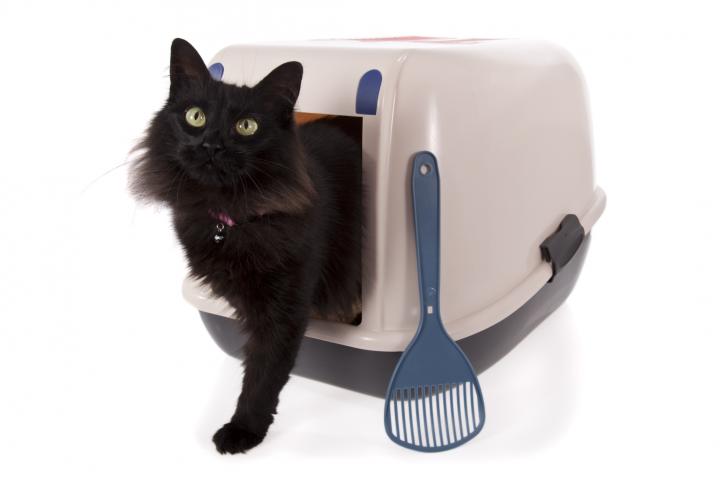One of the more common problem behaviors seen in cats is house soiling (urinating or defecating outside of the litter box). This problem alone is one of the major reasons that cats are relinquished to shelters, cast from households, and, in some cases, euthanized.
In most instances this is truly a problem behavior, however there are some medical conditions that could lead a cat to develop a change in their use of the litter box. Examples include urinary tract disorders (infection, cystitis, or other structural abnormalities), osteoarthritis (the pain of which may prevent them from navigating stairs, for example, to get to the box upstairs or downstairs), and diabetes or kidney disease (which may cause them to urinate more urgently or frequently). Therefore, a cat that is eliminating outside of the litter box should be evaluated to rule out medical problems that may be accounting for their changed behavior. At a minimum, a urinalysis (+/- a urine culture) should be performed to rule out a urinary tract infection. In some instances, the veterinarian may also recommend performing imaging such as radiographs (x-rays) and/or an ultrasound to rule out structural abnormalities of the urinary tract.

After medical problems have been ruled out, attention needs to be turned to addressing litter box management - as litter box issues commonly trigger the abnormal behavior of house soiling in cats. Cats are fastidious creatures and elimination is a "vulnerable moment." We know that cats may consider a litter box inadequate for a variety of reasons including:
The intensity of preferences varies greatly among cats, and some cats have very little flexibility and need to have it all "just right."
With a little bit of patience, a pet owner who systematically works through these points can come to discover what works and what doesn't for a cat with a house soiling problem. The good news is that house soiling, as a problem behavior, can often be successfully resolved with behavioral therapy (litter box management) and without the need of medication.
More from veterinary behavior specialist, Dr. E'lise Christensen:
Veterinary professionals ... learn more